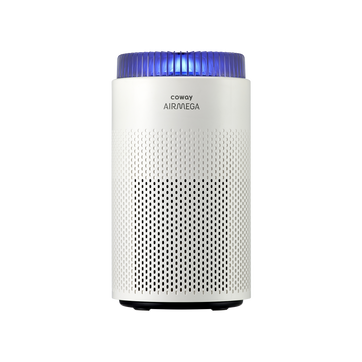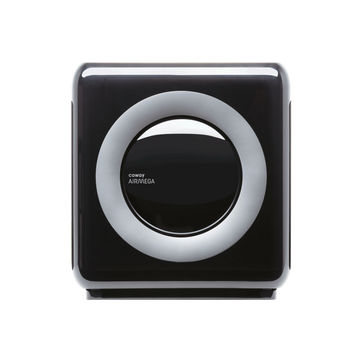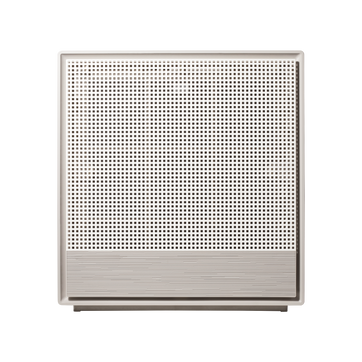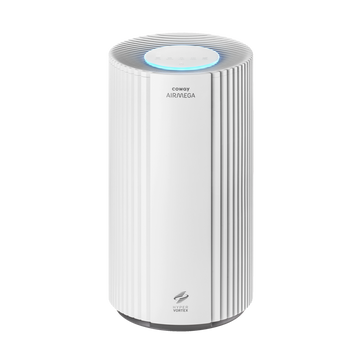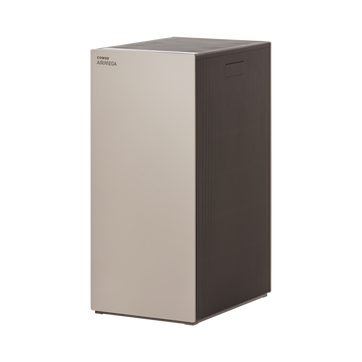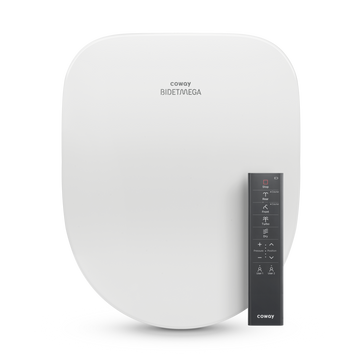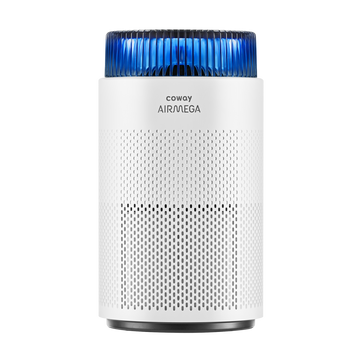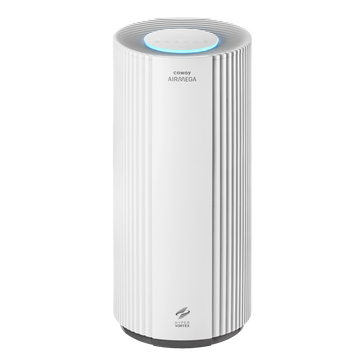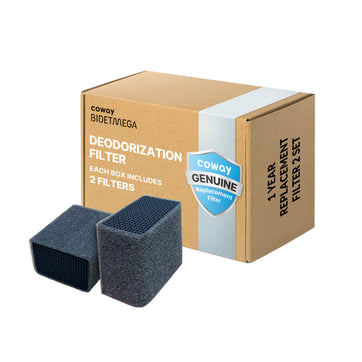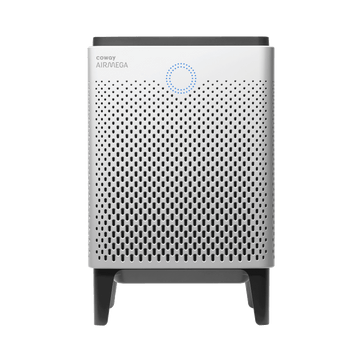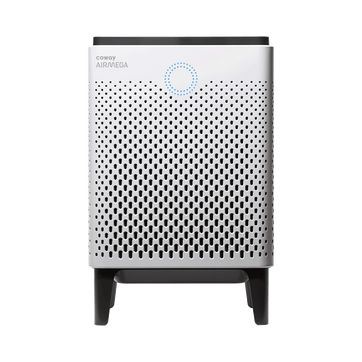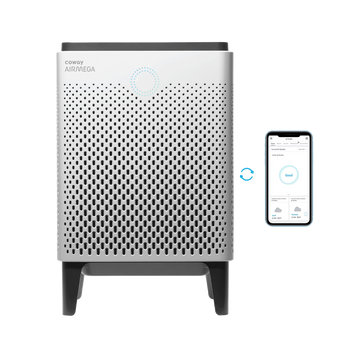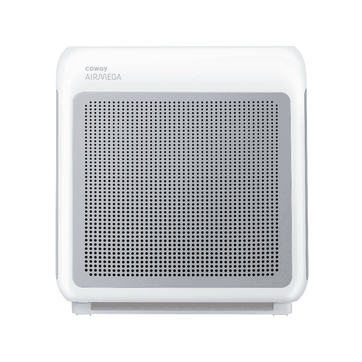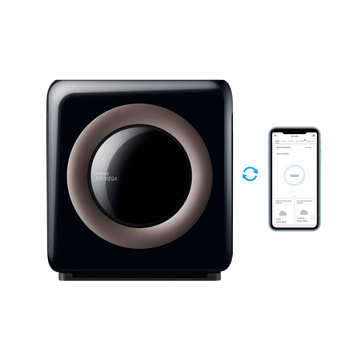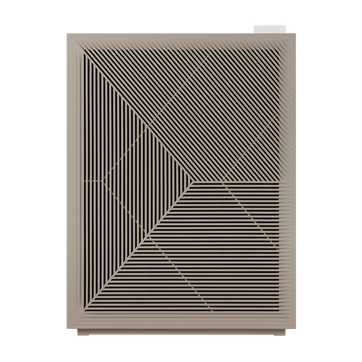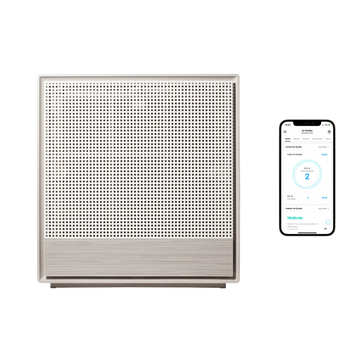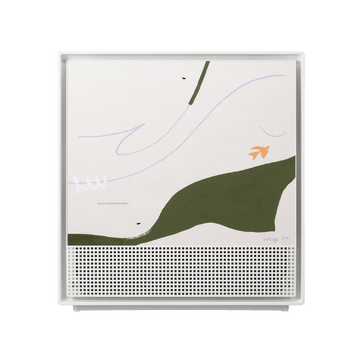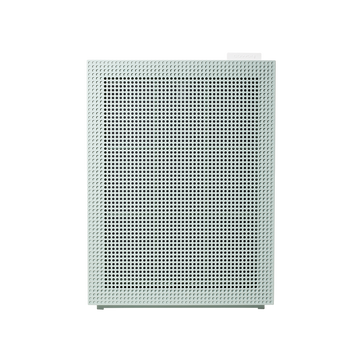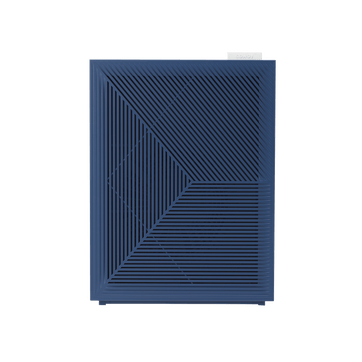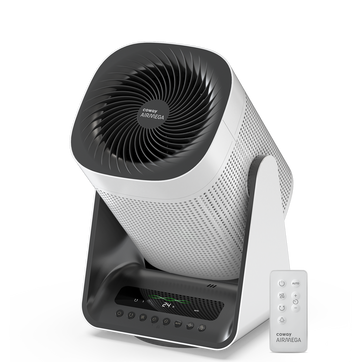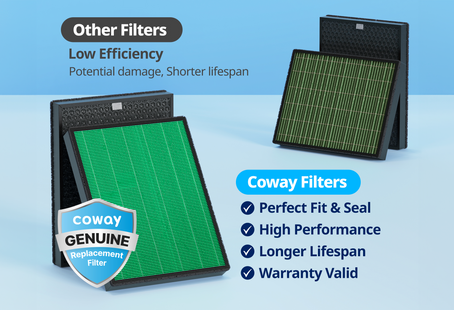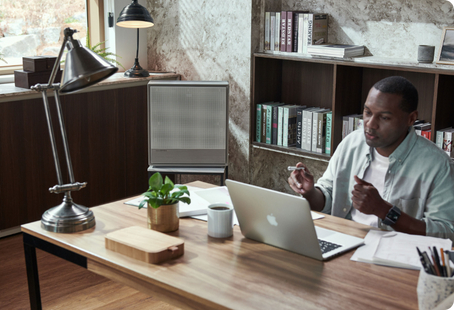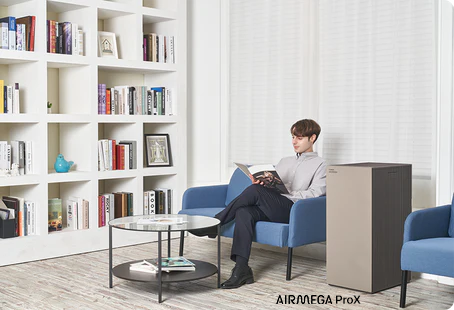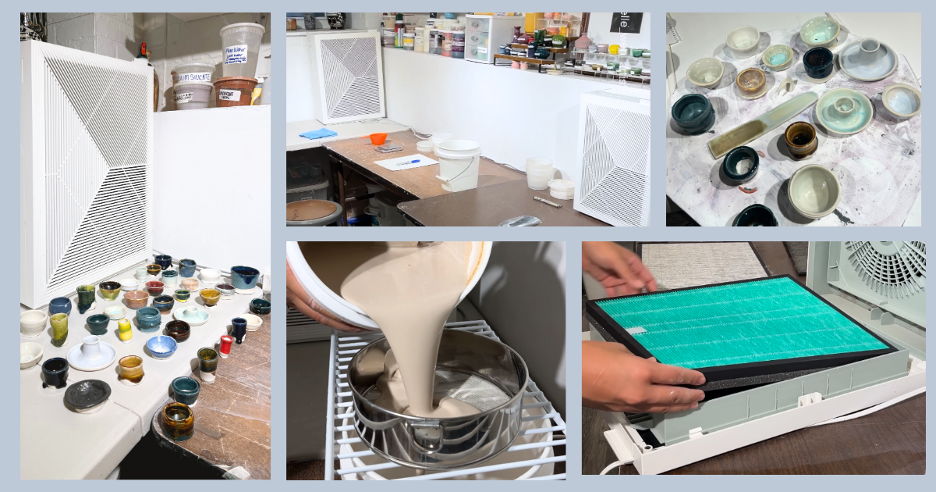
Healthy Business Tips: How Brooklyn Ceramic Artist Michelle Wen Creates Safer Studio Air with Coway Airmega
Michelle Wen brings handcrafted pottery to life in a Brooklyn basement studio where every piece spins into existence on a traditional potter's wheel. As both a ceramic artist and instructor, Michelle has built her reputation through informative content that demystifies the artistic process behind wheel-thrown pottery.
Her distinctive approach includes mixing custom glazes from raw materials with personalized recipes, allowing her to create unique finishes that set her work apart in Brooklyn's competitive ceramics scene.
Operating from her personal studio space, Michelle shares her craft through detailed process videos and posts that have made her a trusted voice in the pottery community. Her expertise extends beyond throwing clay. She formulates her own glazes from scratch, understanding the chemistry behind each ingredient and how it affects both the final piece and the studio environment
Why Air Quality Matters in Ceramic Studios
Working with clay and glazes creates invisible hazards that many artists overlook. Every day in Michelle's studio involves activities that release potentially harmful particles into the air. When she sweeps dried clay chunks near her work areas, microscopic silica particles become airborne. During glaze mixing, powdered materials create clouds of dust that linger far longer than they are visible.
Even the simple act of sanding a glazed piece releases particulates that standard ventilation can't adequately remove. Common ceramic studio air hazards include:
- Silica dust from mixing dry powdered materials
- Particulates from sanding glaze on pots
- Airborne clay particles during sweeping
- Dust from kiln shelves
- Dried clay chunks near working areas
The risks multiply in basement studios like Michelle's, where residential buildings lack the industrial HVAC systems found in commercial pottery facilities. Without proper filtration, these particles accumulate in the air, on surfaces, and most dangerously, in artists' lungs. Michelle recognized this challenge immediately: "My studio is in the basement of a residential building, so we don't have an HVAC system."
How Coway Airmega Transforms Michelle's Creative Space
The Coway Airmega air purifier has revolutionized Michelle's approach to studio safety. After two years of daily use, she describes the transformation as complete: "The air purifiers have completely transformed my studio. You can literally see the glaze dust getting pulled into the filter. This filter is perfect, and I use it every single day that I step into my space."
What impressed Michelle most about comparing different options was seeing other pottery studios struggling with less effective or bulkier units from other brands, or using no air purification at all. The Coway Airmega stood out immediately for its combination of powerful filtration and practical design that actually works in a real ceramic studio environment.

The Three Coway Airmega Features That Matter Most to Artists
Michelle identifies three critical features that make the Coway Airmega essential for her studio work:
- The Air Quality Indicator Light: This feature has become Michelle's safety guide throughout her workday. "The indicator light is amazing because it will inform me when it is generally safe to remove my respirator mask, especially while mixing dry powdered materials, such as silica." This real-time monitoring provides immediate visual feedback about particle levels, allowing her to make informed decisions about safety equipment.
- Compact and Portable Design: The Airmega's size perfectly suits the dynamic nature of studio work. "The compact size is great because I often move the filter when I'm sweeping debris in different parts of my pottery studio, whether from the dusty kiln shelves or dried-up clay chunks near the working areas." This portability means clean air follows her workflow rather than forcing her to adapt around fixed equipment.
- Superior Filtration Power: The actual filtering capability sets Coway apart from competitors. Michelle emphasizes "just the filtering power in general" as a standout feature, noting how she can visually confirm the unit's effectiveness by watching glaze dust being actively pulled into the system.

What Makes Coway Airmega Technology Different
Coway's HyperCaptive Air Filtration system can remove ultrafine particles smaller than most viruses and bacteria, and certainly small enough to capture the dangerous silica particles in ceramic studios. The Airmega line features models designed for different space sizes, from compact studios to large workshops, all utilizing the same advanced filtration technology that has earned multiple design awards.
The Smart Mode feature automatically adjusts fan speed based on detected air quality, ensuring optimal filtration without wasting energy. This intelligent operation means the unit works harder during dusty activities like sweeping or mixing, then reduces speed when the air clears - all without manual adjustment.
Key Coway Airmega advantages include:
- Real-time air quality monitoring with color-coded indicators
- Multiple models for spaces from 361 to 3,285 square feet
- Smart Mode for automatic efficiency optimization
- Washable pre-filters that reduce replacement costs
- Five-year limited warranty with money-back guarantee
- Free shipping on all Airmega models

Durability That Delivers Value
After two years of continuous operation in challenging studio conditions, Michelle's Coway Airmega continues performing like new. "It has been two years and the filter is in great condition; I haven't had to replace any part of it yet. I have only needed to wash the washable filter." This durability translates to real value for working artists who need reliable equipment that won't fail during critical projects or teaching sessions.
This longevity becomes even more impressive considering the daily challenges: glaze dust, clay particles, kiln debris, and constant repositioning throughout the studio. While other brands might require frequent filter replacements or show declining performance, the Airmega maintains its effectiveness through simple maintenance of the washable pre-filter.
Which Creative Professionals Need Coway Air Purification Most
Based on her experience, Michelle strongly recommends air purifiers for specific creative workspaces. "As a ceramic artist I would highly recommend an air purifier for any workshop or studio space that would have particulate matter or fumes in the air. Especially ceramic studios, wood shops, metal shops, and glass or resin studios."
Her message to fellow artists is clear: "Every pottery studio should have an air purifier if they don't already have an effective HVAC system in the building."

Transform Your Creative Space with Coway Airmega
Michelle's experience demonstrates how proper air filtration fundamentally changes creative work environments. When you can literally watch harmful particles being removed from your breathing space, you understand the invisible protection happening every moment. For artists serious about long-term health while pursuing their craft, investing in proven air purification technology becomes essential rather than optional.
The combination of Coway's advanced filtration technology, thoughtful design features, and proven durability makes Airmega the clear choice for creative professionals. Whether you're throwing pottery, sanding wood, working with resins, or creating in any medium that generates airborne particles, Coway Airmega provides the clean air foundation for sustainable creative practice.
Discover the full range of Coway Airmega air purifiers designed for spaces of every size. With the reliability that Michelle trusts every day in her Brooklyn studio, there's an Airmega solution for your creative space.
Disclaimers
1Coway air purifiers have been proven to trap dust, pollen, dander, viruses and bacteria in the air based on KCL (Korea Conformity Laboratories) testing.They have been tested in a 30㎥ size chamber according to the Korea Air Cleaning Association standard (SPS-KACA 002-132:2022 Modified) to measure the 0.01㎛ size of particle removal rate. It was tested on maximum airflow speed in normal room temperature and humidity conditions. The performance may vary in the actual living environment of customers.
→ Tested with Airmega Aim, 50, 100, 150, 160, Tower AP-1216L, Mighty AP-1512HH, MightyS AP-1512HHS, 200M, Icon, IconS, 230, 240, 250, 250 Art, 250S, 300, 300S, 350, 400, 400S, 450, ProX
299.97% of viruses, bacteria, fungi and pollen were verified to be removed from the air for Coway air purifiers which have Green True HEPA™ filter applied based on the Japan Food Research Laboratories(JFRL) testing according to JEM 1467 standard.
→ Tested with Coway Airmega Mighty AP-1512HH, MightyS AP-1512HHS, 250, 250 Art, 250S, 300, 300S, 400, 400S
→ All tested by JFRL and received above result within below time.
4The concentration of ammonia, acetaldehyde and acetic acid were proven to be removed within 30 minutes by FCG Research Institute, Inc. Human Life Science Lab. It is not a demonstration result in the actual use space. Not all odors and gases may be supported. → Tested with Coway Airmega 150, 160, Mighty AP-1512HH, MightyS AP-1512HHS, 400, 400S
5The coverage area of the air purifier is based on an area where the air cleaner can make two air changes per hour (ACPH). An air change per hour translates to how many times an air purifier can clean an area, assuming the height of a ceiling to be 8 ft, in one hour. Therefore ** means two air changes per hour means that the cleaner can clean the area once every 30 minutes and * means air changes per hour means that the air purifier can clean the area once every 60 minutes.
10Terms and conditions apply. Discounts, including promotions, coupons, bundle discount and subscription discount, cannot be stacked on top of other coupons. During promotional periods, discount codes will not be able to be applied to orders. Promo codes may apply to products only—filters, accessories, and new products within 3 months of the release date are not included.
11Based on Coway R&D internal laboratory testing, activated carbon filtration was shown to remove up to 95% of ammonia odors within 40 minutes, and up to 99% of fecal odors within 20 minutes. Actual performance may vary depending on usage conditions.
